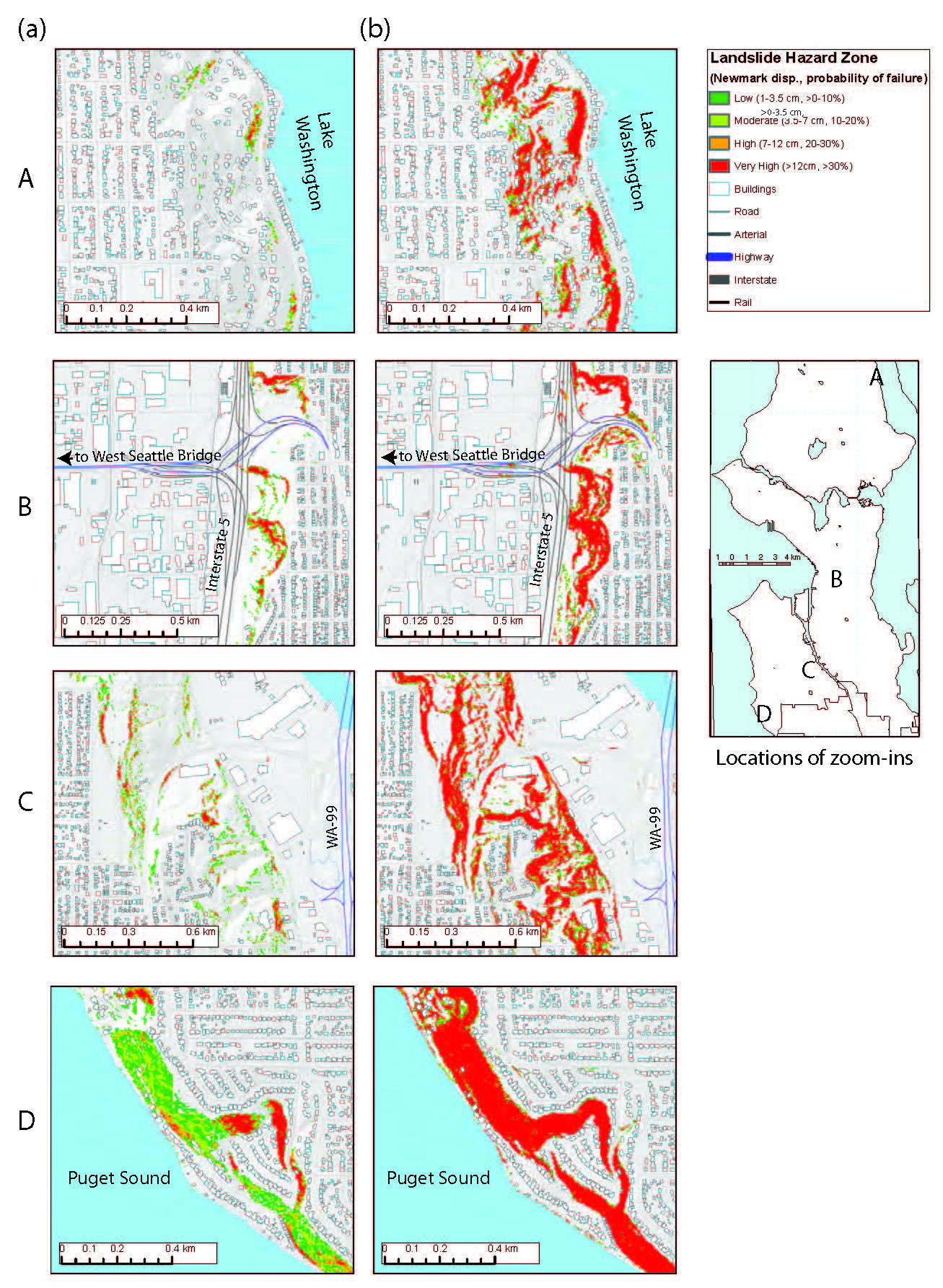Landslide Danger Looms in Next Seattle Earthquake

A home on Seattle's steep and scenic slopes comes with a hidden risk. The next earthquake on the Seattle Fault, which cuts under the heart of the city, could trigger many more deadly landslides than previously predicted, a new study finds.
The risk of landslides in Seattle comes as no surprise to its residents. Every winter, heavy rains soak the ground atop a clay layer buried in some spots, until the layers grow so wet they slip and slide away. Most sediments in Seattle are "unconsolidated," jumbled piles left behind by glaciers that plowed through the Northwest during the last global cooling.
These loose soils can also collapse from earthquake shaking. To estimate the future risk of earthquake-triggered landslides, researchers at the University of Washington created a computer model of a magnitude-7.0 Seattle Fault earthquake and tested the shaking effects on Seattle slopes and soils. The findings were published today (Oct. 21) in the journal the Bulletin of the Seismological Society of America. [Video: Earthquake Magnitude Explained]
The landslides were concentrated on coastal bluffs and in southern parts of Seattle's metropolis, near the fault. And the risk of slumps and slips was worse in the winter, when the ground was wet. But some of the landslides set off by the earthquake were outside of the city's known risk zones.
"We found that one-third of the landslides triggered in the simulation were not already in areas defined as prone to landslides," said study author Kate Allstadt, a graduate student in seismology at the University of Washington. "A lot of times people say that they already know where the slopes are unstable, but this illustrates that we need to do dedicated studies on seismically induced landsliding."
During wet, winter conditions, the earthquake simulation found 8,000 buildings were in landslide hazard zones. The slides were also likely to cut off highways and railroad lines. During dry conditions, 1,000 buildings were in hazard zones.

The last big earthquake on the Seattle Fault was around A.D. 900, according to geologic studies and Native American oral history. The 30-mile-long (48 kilometers) fault strikes east-west across Puget Sound, near downtown Seattle and Bainbridge Island.
Sign up for the Live Science daily newsletter now
Get the world’s most fascinating discoveries delivered straight to your inbox.
On the bottom of Lake Washington stand trees, still upright, that slid into the lake atop a huge landslide triggered by the last Seattle Fault temblor.
"That is the most haunting thing to me," Allstadt told LiveScience. "Today, there are all these mansions on those hills. Everybody wants a view of Puget Sound or Mount Rainer. What if that happened today?"
The chance of another shaker hitting in the next 50 years is about 5 percent, scientists forecast. On average, the Seattle Fault rips loose with an earthquake every 750 years.
Email Becky Oskin or follow her @beckyoskin. Follow us @livescience, Facebook & Google+. Original article on LiveScience.










